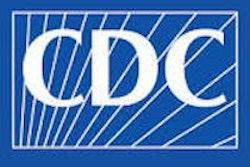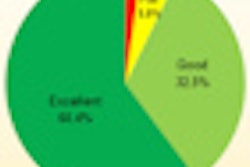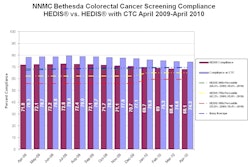Cancer screening for three common cancers covered by U.S. screening programs still lags behind target levels, the U.S. Centers for Disease Control and Prevention (CDC) reported this week.
Screening for breast, cervical, and colorectal cancers all fell below the recommended levels targeted in Healthy People 2020, a program that sets national objectives for use of recommended cancer screening tests. The U.S. Preventive Services Task Force (USPSTF) recommends screening tests for each of these cancers to reduce morbidity and mortality.
Compliance with screening guidelines depended heavily on ethnic background and years of residence in the U.S., wrote Carrie Klabunde, PhD, and colleagues from the U.S. National Cancer Institute in cooperation with other U.S. institutions.
The results were based on data from the 2010 National Health Interview Survey (NHIS), a nationwide household survey that samples the noninstitutionalized population of the U.S. for screening compliance based on age, race, ethnicity, education, length of U.S. residence, and source of healthcare financing.
The overall breast cancer screening rate was 72.4%, compared with the Healthy People 2020 target of 81.1%. The overall cervical cancer screening rate was 83%, compared with a target of 93%, and the overall colorectal cancer screening rate was 58.6%, compared with a target of 70.5%, the researchers reported.
Screening rates for all three types of cancer were significantly lower among Asians than among whites and blacks. In addition, Hispanics were less likely than others to be screened for cervical and colorectal cancer. Higher screening rates were positively associated with education, availability and use of healthcare, and length of U.S. residence.



















